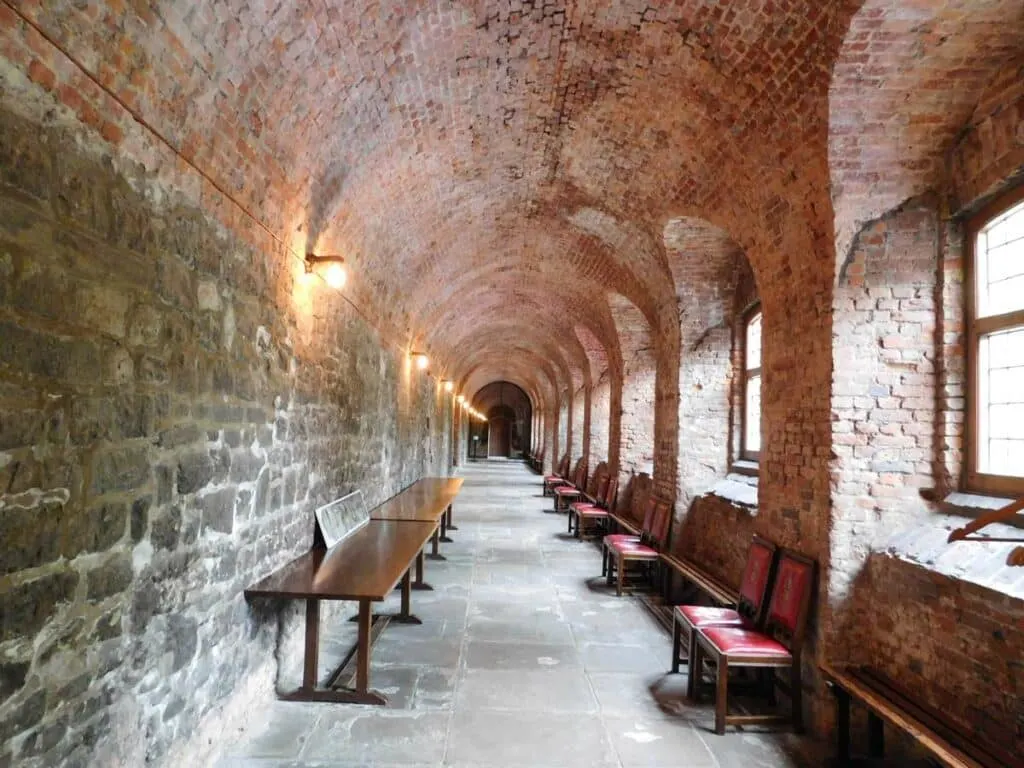Looking to explore the Charterhouse? This eccentric London spot has many tales to tell, here’s everything you need to know before you visit.
The Charterhouse in London has an intriguing past that dates back to long before it was the Charterhouse– and it’s quite eerie.
There are plenty of places to visit at the Charterhouse too, including a museum, chapel, gardens and the great chamber.
Ready to explore?
First of All… What is the Charterhouse?
Well, the Charterhouse has been many things over the years since it was first built in 1371. It’s been a monastery, a grand Tudor mansion, boys school, and now an almshouse.
What’s an almshouse? Essentially it’s a housing charity.
Thomas Sutton was an English Servant and businessman who set up the charity in 1611. With sixteen Governors who are the charity trustees and meet three times a year. Since 1611, the Charterhouse has provided accommodation to the community, known as the Brothers.
What Does the Charity Do?
The charity provides a much-needed home and cares for people over 60 who are in financial and social need and can live independently.
Did you know that there are over 2000 almshouses in England? Nope, neither did we. But, what makes the Charterhouse’s almshouse so unique is its sense of community.
Beneficiaries live in private flats, they come and go as they please. Yet, still choose to eat most of their meals in the historic 16th Century Great Hall joined by members of staff and get involved in a community book club and keep fit sessions.
What Settled Practices Does The Almshouse Have?
Up until 2018, all residents were men– hence the community being called the Brothers and still is today. Almshouse is happy to finally have female residents and hopes that many more women continue to join the community.
The place of the Chapel in community life is well respected by all members of the community. Although not all members are Christians, the saying of grace at lunch is important to maintain its Church of England Origins.
Who Can Become a Brother?
As welcoming as the Almshouse is, there is a strict criterion that you must meet in order to become a part of the community.
You’ll need to be single and over 60. You should be in financial, housing and social need with no significant debts. Being able to live independently is crucial and wanting to contribute to the community helps.
The History of Charterhouse London

The Charterhouse’s history is very rich and dense, so strap in whilst we travel back to 1348.
It was mid-way through The Black Death when the land was used as a burial site for victims of the bubonic plague. Gruesome, we know, we can’t promise that it’s not haunted by ghosts. Some years later, in 1371, the Charterhouse was built.
Its first life was as a Carthusian Monastery, which flourished through the later medieval and early Tudor periods. Then came the dissolution of the monasteries between 1536 and 1541, and with this, the Charterhouse transformed into a mansion for wealthy noblemen and a refuge for royalty.
Royal Happenings at The Mansion
Elizabeth I met the Privy Council at the mansion in the days before her coronation in 1558. Later, James I used the Great chamber to create 130 new Barons before he was crowned.
Who is Thomas Sutton and What Did He Do?
Thomas Sutton was an English servant and businessman, and in 1611 he bought the mansion and founded the Charterhouse. He established the Thomas Sutton foundation that now bears his name.
Thomas Sutton’s will provided up to 80 Brothers that were either decrepit, old or captains at sea or at land, maimed or disabled soldiers, merchants fallen on hard times, or those ruined by shipwreck as well as creating Charterhouse School.
Charterhouse School is one of nine English public schools, it moved to its Godalming site in 1872 but kept a strong relationship with the Charterhouse with representative observers sitting on the Governing Board.
James I retained his connection with the Charterhouse and became the first Royal Governor of Thomas Suttons Foundation. Since then, Wellington, Gladstone and Cromwell have also been Governors.
The Charterhouse also has a literary past, appearing in Daniel Defoe, Charles Dickens and William Makepeace Thackery’s writings.
What Can I Do at The Charterhouse?
Discover the Charterhouse’s vibrant history through 120 objects at the museum. The museum displays start in the present day and travel backward to reveal a fascinating tale of history.
Explore The Great Chamber, it played host to grand royal occasions and was the backdrop for Tudor plotting and intrigue. It’s the only Tudor great chamber to survive in London and you should visit the charterhouse in London for this alone.
Visit the English country-style gardens with roses, herbaceous borders, ancient mulberry trees and a small pond. The Gardens are for exclusive use for the Brothers but can be booked for private tours.
The Chapel services are open to the public and the Gatekeeper is happy to admit anyone who would like to attend services on weekdays and Sundays.
Practical Tips for Visiting the Charterhouse
- The Museum runs two tours daily, Tuesday through Saturday, you must book before you visit. You can book a tour of the Charterhouse here.
- The Charterhouse is open from 10.30am to 4.30pm Tuesday through Saturday.
- The nearest tube stations are Barbican and Farringdon – the Charterhouse is a short walk from both stations
- You can book family activities at the Charterhouse including arts and crafts and an exclusive meet and greet with Queen Elizabeth I.

